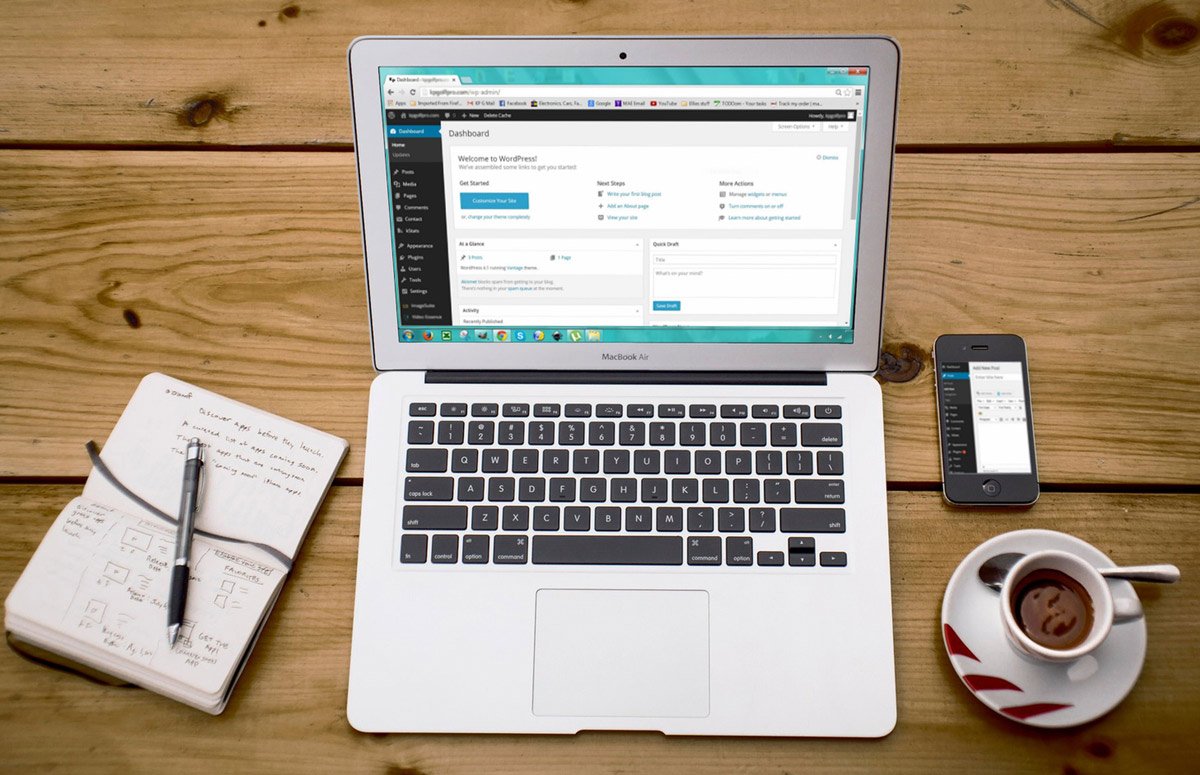
If you only have one or two clients here and there, you may not think your website is important. Conversely, if you’re swamped, you may put website updates at the bottom of your to-do list because they aren’t as important as other priorities.
However, consumers and businesses now live much of their lives online and look to your website as a representation of who you are and what you offer. If you’re presenting a cluttered and old portfolio on your website, you’re not likely to attract many potential clients or sales. As you grow, a great website will only get more challenging to maintain, so setting the foundation now is critical.
Use the following tips to create a great side gig website: one that can grow with your business, present you in the best light, and ensure interested parties are able to get in touch with you.
1. A Clear and Visible Value Prop
You want potential clients to know exactly what you do and how you do it, right when they arrive at your site. While the jury is out on how long you have to grab a visitor’s attention (Hubspot says 15 seconds, Kissmetrics says 59 seconds), it’s easy to assume the answer: not long. We’re all working in a competitive online space, and that means you have to impress your visitors fast.
One way to do that is by putting your value proposition front and center, and there are a few formatting options for doing this. Website strategy experts at RichPage suggest a number of ideas, including:
- Use bullet points within the hero of your home page, paired with a form for maximum impact.
- Add a tagline under your logo, using just 3 to 5 words or elements from your value prop.
- Keep your value prop in the header, so visitors see it, no matter what page they’re on.
- Include it at the top of your blog sidebar.
- Create a “Why Me” page, or something similar, and contrast yourself with competitors.
2. Easy Contact Navigation
The point of a website is to make it easy for people to find you and then reach out about your services or products. If your website doesn’t make that easy, you stand to lose people. Web designers call anything that disrupts the navigation of a site, or in this case, the process of reaching your contact page, friction. There’s something standing between A and B, and that pushes visitors away. The Next Web shares a few examples of friction:
- Cluttered or distracting visuals
- Inconsistencies in the interface
- Unnecessary decisions/actions
- Confusing or never-before-seen functions
If you already have a website, assess how easy is it to get in touch with you. If you don’t want to pay for user testing, ask friends to go on your site and give honest feedback as to how easy it is to find your contact page and get in touch.
If you’re up to it, do this with your entire website to ensure your visitors’ experience is seamless in every way. If you sell products, repeat this process for the purchasing flow. How easy is it to go through? What’s hindering your testers?
3. An Eye-Catching Portfolio
Your portfolio is the next most important thing to your value proposition, so you want it to stand out. Here are a few tips to curate your best portfolio page:
- Show only your best work: No one is going to sift through pages and pages of work. Focus on showing only your best and most recent work to present yourself most effectively.
- Bring in data when you can: If you can tie numbers to your work, do it. Include information about how the results were measured, how successful the project was, etc.
- Reduce clutter: Your work should stand out on its own. Leave unnecessary photos and words out, and focus on highlighting your work as best you can.
4. Strict Security
This feature isn’t about your visitors, but your business. In our evolving online world, security is of the utmost importance, especially if you store customer data. There are a few easy ways to boost your website’s security quickly and at minimal, or zero, extra cost.
A. Keep Your Site Up to Date
Most themes and hosting providers include security in their regular updates. Leaving this out of date puts you at risk for an attack. Always update your site when it asks to. Better yet, set it to update automatically, so you don’t put it off for days and weeks at a time.
B. Use Two-Factor Authentication (2FA)
“Two-factor authentication involves a 2 step process in which you need not only your password to login but a second method. It is generally a text (SMS), phone call, or time-based one-time password (TOTP). In most cases, this is 100% effective in preventing brute force attacks to your WordPress site. Why? Because it is almost impossible that the attacker will have both your password and your cellphone,” according to a WordPress Security guide.
Use 2FA for your web hosting login and the login for your website directly. If you use WordPress, there are a number of plugins you can use to get this set up quickly and easily.
C. Backup Your Site Regularly
In the event that there is a security breach, a website backup will make your life a lot easier; with copies of your entire site, you can get it back up and running faster. Your host may provide this service for you, but if they don’t, hire a freelance developer to set it up, reach out to your hosting provider, who likely offers it as a paid service, or download a plugin that will automatically do it for you.
5. A Scalable Theme and Hosting Provider
Finally, your side gig may not be a side gig forever. One day, it could turn into a part-time or full-time job. You want to set your site up for success in case this happens one day, so it needs to be scalable. Meaning, it can grow with your business.
There are a number of areas to consider when looking at scalability, including your theme, your hosting provider and your CMS (content management system, like WordPress or Blogger). When assessing potential scalability, ask yourself the following questions:
- Can you continually update your theme as you grow, adding custom-built features? Does it offer extensive features that others don’t? Even if you’re not using them now, it’s good to have access to those options later.
- Does your hosting provider offer managed hosting? As traffic increases, managed hosting makes it easier to maintain your website. A dedicated person or team will maintain updates, security, etc. so you don’t have to, and knowing this now will mitigate the headache of switching hosting providers later.
- What CMS are you using? WordPress is one of the best options because it is as scalable as it gets. Platforms like Blogger or even Wix limit the customizations you can make, which can be frustrating as you grow.
If the answer to most of these questions is no, consider the changes you need to make now, before it gets too challenging to do it later.
Build a Great Side Gig Website
Do yourself justice with a great side gig website. Make it easy to get in touch, feature your work in a clean and impressive manner, and don’t forget about details like security or scalability. With these pieces in place, you have a great foundation to build on. As your business grows, your web presence can grow with you. In our online world, there are few things more important than that.








